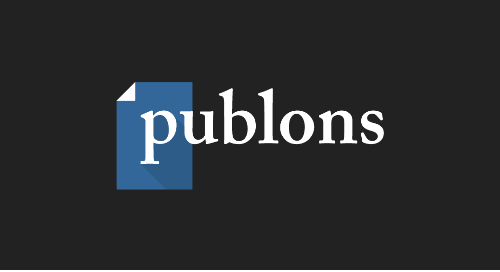cascade-journals-what-and-why
April 01, 2018
Wiley publishes a number of "cascade" journals where authors rejected from other journals are given the option to transfer their submission, along with any reviews, to an alternative journal. Cascade journals are generally broad scope and operate a "sound science" philosophy, whereby they'll only reject fatally flawed papers.
To find out more about cascade journals, why authors would transfer a paper, and what value this  provides also to the supporter journals, I recently interviewed the Editors-in-Chief of a cascade journal and a supporter journal.
provides also to the supporter journals, I recently interviewed the Editors-in-Chief of a cascade journal and a supporter journal.

Tell me about your journal’s philosophy.
We try to be “author-friendly”. Most journals reject 60% of what they see, saying “this is flawed”, “it lacks novelty”, or “the focus is too narrow”; these can mostly be fixed. Novelty is in the eye of the beholder—you don’t have to change that if you don’t want to in our journal. Our authors don’t have to do everything suggested by reviewers and it’s mostly up to them as to how they make changes.
Many submissions have previously been rejected by one of your supporter journals. Why is this an important option?
The exciting bit for me when we launched was the referral process. Most papers that are rejected can be fixed so here’s an opportunity to provide the authors with the possibility of revising their paper.
What surprised me was that I often didn’t agree with the reviews and decisions. As I didn’t pick the reviewers, I was reading the reviews as the authors would. For example, many problems identified are actually just not explained clearly and that’s easily fixed. Sometimes they say it “isn’t novel” and I look and think it’s really cool.
Why do you think authors take up the option?
Authors submit believing that their paper is high enough quality to be published so when it’s rejected they’re faced with a dilemma. They can submit to another journal for another set of reviews or, if they don’t want to go through this again, can transfer the paper to us along with the same reviews.
Alternatively, authors may need to publish quickly and they know they’d get a decision rapidly from us. Our author friendly attitude includes “let’s help you get published as quickly as possible”.
Do you reject papers?
That’s one misconception, we do reject papers, but we look for reasons to publish rather than reasons to reject. We don’t have many set criteria for rejection but it’s all about communication and if authors are not communicating, we can’t publish. As with every journal, occasionally people do things that are just incorrect and if they can’t fix it, we’ll reject it.
What would you say is your biggest challenge?
Maintaining our original ideas on providing an author-friendly service with the growth we’re seeing has become a challenge. One thing that every author will tell you is that the faster the decision, the happier they are. Our goal is always to get comments and decisions back to people within a month.

What are the benefits to you of having the option to refer papers to Ecology and Evolution?
On both GCB and PCE, we only accept a very small proportion of the submissions we receive and this means rejecting many perfectly good papers. Having the option to refer them to a cascade journal like Ecology and Evolution, rather than simply rejecting them is valuable.
Can you explain more about how you make the decision to refer a paper?
Sometimes, we refer after the paper has been reviewed, particularly when the concerns raised by reviewers center on novelty of the paper. This work should absolutely still be published somewhere, so referring to the cascade journal is a good option. Alternatively, the reviews might point out some more major concerns about the paper. In this case, the cascade journal can give some guidance about how much revision they'd need to be accepted there instead.
Other times, we'll refer a paper before it goes to review—the editor takes an initial look and decides that it's too specialized or out of scope for their journal. Referring at this stage means that we can provide the authors with our decision quickly, which is important.
Our editors are assigned papers that are closest to their field of expertise. Occasionally this means that they'll assess a paper that is of great interest to them, but may not meet the journal's acceptance criteria with regards to breadth or novelty. In this case, editors like being able to give authors an alternative, rather than rejecting a paper that they personally feel is good.
And what do you think are the benefits to the authors of this model?
In many ways, the author has nothing to lose. The referral option is just that, an option. As editors, we're not forcing them to transfer, or even recommending it—we're just presenting it as an alternative. If the paper has been through review at our journals, the author knows that these too will be passed to the cascade journal, and in many cases the editors can make a decision without sending it out for further reviews. This means that they are likely to get a speedy decision and that can be a real advantage to authors if they take up the offer.
If you have the option to refer papers, we’d love for you to refer as many “sound” science papers as possible. Feel free to talk to your JPM or directly with the editor of the cascade journal if you are not sure what kinds of papers would be suitable for referrals. Alternatively, if you’re an editor that doesn’t yet have a journal to refer to, but would be interested in finding out more, talk to your JPM.










